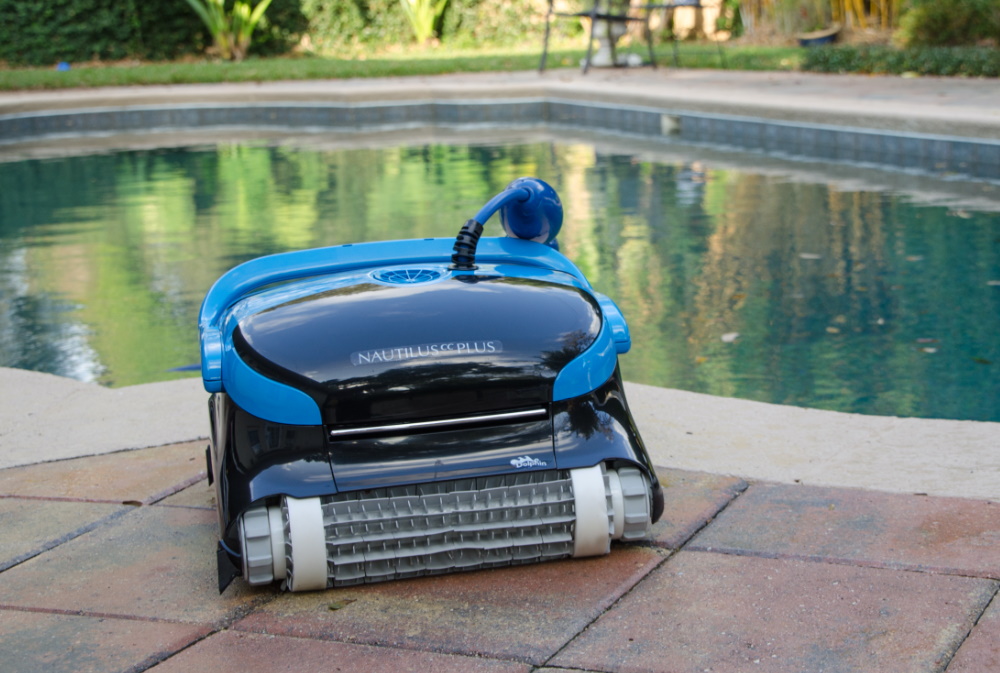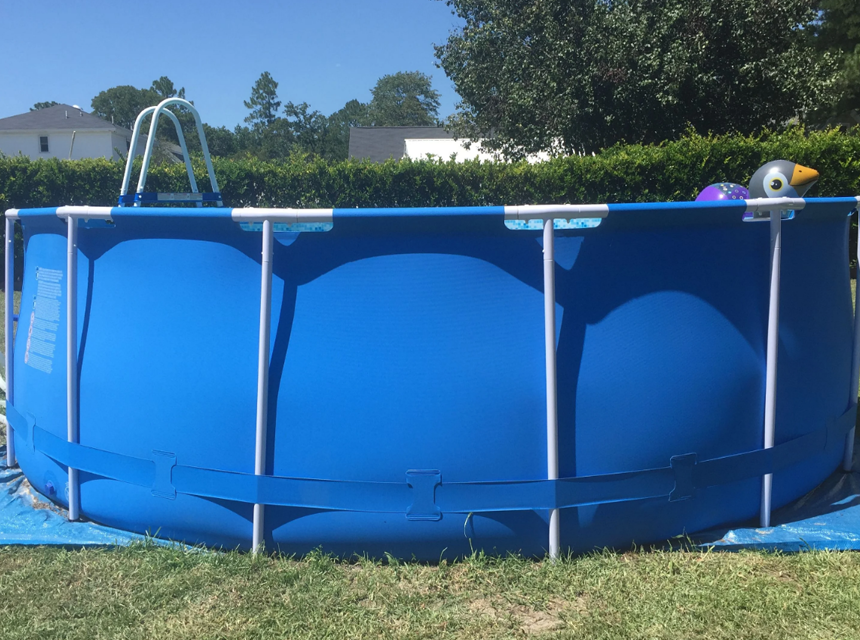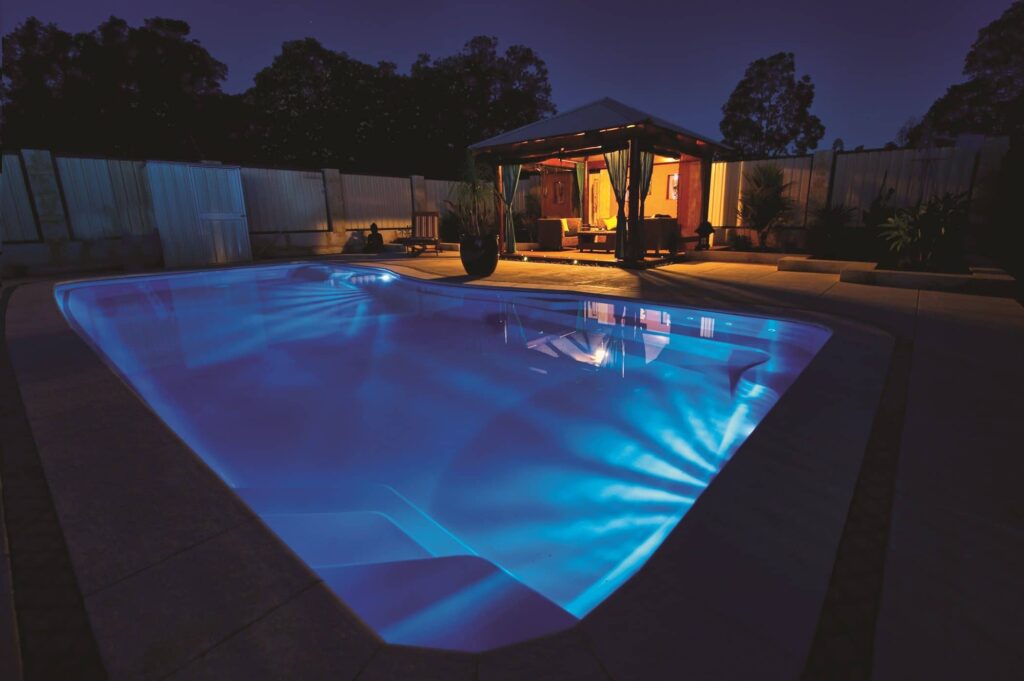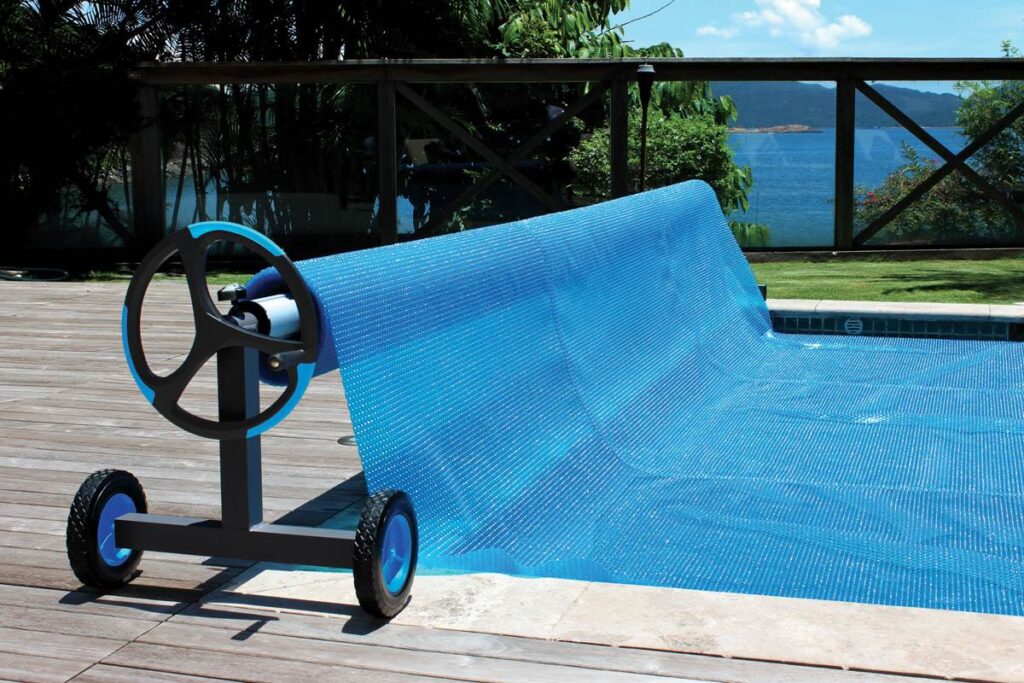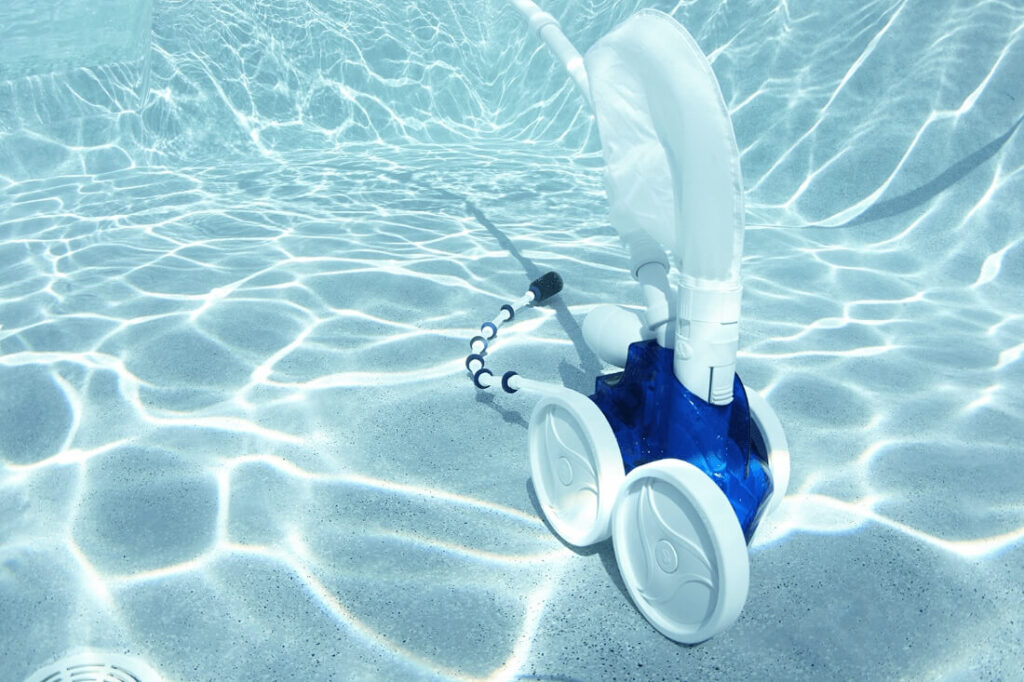One of the crucial components of any swimming pool system is the filter. This component is part of the circulation system that ensures your water stays clear.
Your swimming pool filter does what any other filter does and traps dirt and debris that may have gotten in the water. As such, it may become clogged after some time, reducing its efficiency and resulting in cloudy pool water. To prevent this, cleaning your filter as part of the regular maintenance routine is important. For sand or diatomaceous earth filter, you need to clean it through backwashing. Read on to understand what backwashing entails, reasons to backwash your filter, how to know when your filter needs backwashing, and a step-by-step explanation of the process.
Backwashing is a term that describes the process used to clean a sand or diatomaceous earth pool filter. This process involves reversing water flow. Also, instead of the water passing through the filter and going back into the swimming pool, it passes through the filter and exits through a waste pipe. Backwashing removes impurities and debris trapped in your filter and flushes them out through the waste line. You can also attach a hose to the waste line to dump the waste elsewhere.
The backwashing process only takes a few minutes, and to make work easier, pool owners sometimes install automatic backwash systems.
Once done backwashing, the filter should revert to functioning normally. Remember, for the filter you’re using to work efficiently, the pump should be allowed to run for at least eight hours a day. Notably, several pool pumps, including variable-speed options, are available for use. Of course, if you’re thinking of buying one, considering different brands should help you choose the best variable speed pool pump for your pool type and size.
You can also buy a pump timer and attach it to your pump to regulate the amount of time the system runs. This way, you will prevent the system from running throughout the day and save on energy costs, especially when you are not around.
Nevertheless, if you’re looking for a pump timer, find out about the best pool pump timers for your pool type before making a purchase decision.
If you are a pool owner, you may have to choose between a sand and diatomaceous earth (DE) filter. The type of filter you choose generally depends on your budget. Additionally, you should consider the amount of time you’ll need for maintenance. We’ve outlined the best pool filters to cater to a wide range of needs and budgets. Although both sand and DE filters can be cleaned through backwashing, the procedures vary slightly.
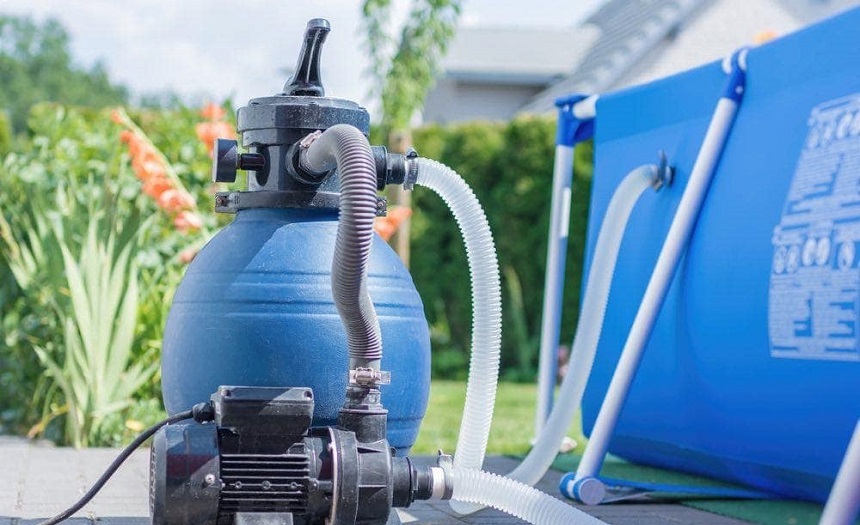
In a pool sand filter, water enters the tank and is then forced downward through the sand. The filter cleans the water as it passes through the sand before returning it to the pool. The main disadvantage of this pool filter is that it can only trap large dirt particles allowing the tiny ones to pass through.
There are three major types of sand pool filters, as discussed below.
Zeolite – This filter is made from various minerals extracted from volcanic rocks. Zeolite sand has a distinctive honeycomb structure that easily collects dirt and other debris.
Silica– Silica is a pool filter made from ground quartz, forming fine sand that can easily trap dirt in your swimming pool water. This type of sand filter is quite popular since it is affordable.
Glass– This pool filter is made from recycled glass material. Glass sand works best in pools with hard water because glass has a negative charge that makes it effective at capturing manganese and iron particles.
Also, the type of sand filter you use may depend on whether you have an in-ground or above-ground swimming pool. Some sand filters, like the Krystal Clear Sand Filter Pump from Intex, for instance, may not work for in-ground pools, but if yours is above ground, it should work just fine.
Here are the basic steps you should follow when backwashing a sand pool filter.

DE filters are made from fossilized remains of tiny diatoms. These remains are usually put together to form a sedimentary rock. When water passes through a DE filter, the sedimentary rock traps dirt particles, cleaning the water. Most people like this filter since it sieves out even the tiniest dirt particles, making your water clear. However, it requires regular maintenance. You need to add fresh diatomaceous earth powder each time you backwash the filter.
Follow the steps below when backwashing a DE filter.
Pool filter backwashing is one of the most crucial swimming pool maintenance Trusted Source Tips for keeping your spa or pool healthy All swimming pools and spas need regular maintenance. www.healthywa.wa.gov.au routines, and with it, you can extend the lifespan of the filtering media. Additional reasons to backwash your pool filter include.
Swimming pool filters mostly operate at a pressure of around ten psi. However, it is normal for a filter to operate with a pressure of between 5 to 15 psi depending on the type.
When the filter system becomes clogged, it will strain during operation, increasing water pressure in the pool filter system. Backwashing helps to dislodge dirt and regulate water pressure.
Pool filters handle a lot of dirt. If not removed regularly, the dirt will clog the filter affecting water flow. As a result, the speed of the water flowing through the filter back into your pool will reduce. You can easily note the difference in water circulation through the water jets that pump water back into your swimming pool.
When dirt accumulates in the filter, it cannot effectively remove dirt from your pool water. As a result, the water may appear cloudy. Cloudy pool water is unsightly and can discourage you from swimming. Additionally, such water can affect your health Trusted Source Swimming pools - water quality - Better Health Channel If it is not properly maintained, the water in your domestic swimming pool may contain a range of microbiological organisms (microbes), including bacteria, viruses and protozoa. www.betterhealth.vic.gov.au . Although cloudy pool water can also result from chemical imbalance, backwashing is the quickest and cheapest technique to clear the water.
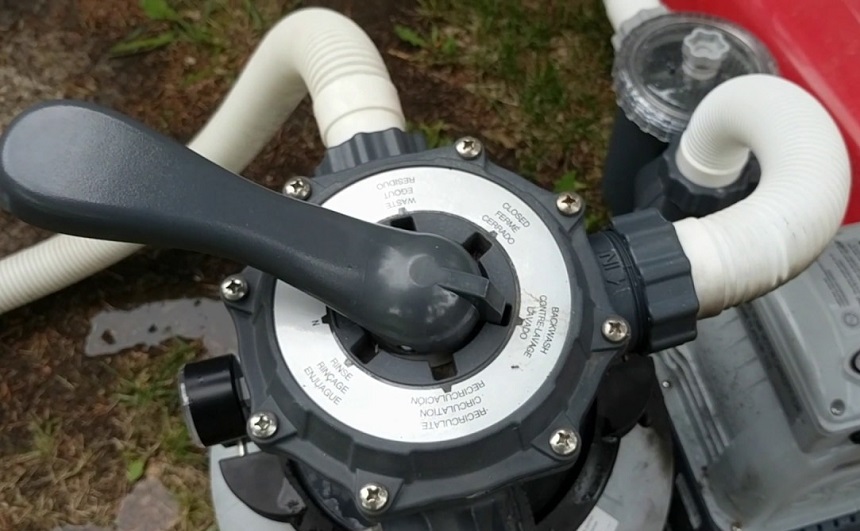
Swimming pool owners often wonder when they should backwash their swimming pool filters. However, knowing when to clean your filter is not difficult since your swimming pool will show signs. The first thing that you should look out for is cloudy water. When your swimming pool water becomes cloudy, it means that the pool filter is not working properly and may be clogged.
Pool filter pressure is another sign you should look out for. When you install a sand or DE filter, take note of the pressure readings. If the pressure increases suddenly, backwash the filter. Increased pressure means the filter is clogged and struggling to operate. Finally, backwash your filter if your swimming pool has an algae problem.
According to professionals, you need to backwash your sand swimming pool filter after two to four weeks. On the other hand, DE filters require backwashing after four to six weeks.
However, the frequency at which you backwash your filter depends on several actors. One of the first things that affect the frequency is the weather. During the rainy season, external particles like dry leaves, dead insects, and sticks find their way into your swimming pool. As a result, your filter will overwork trying to get rid of these dirt particles, and it may get clogged much quicker.
Another factor that determines how often you should backwash your filter is how many people use the pool. Generally, public pool owners should backwash their filters more often compared to those with private swimming pools.
Finally, the type of filter you use matters.
People often think that filter backwashing is a complex process that takes a lot of time. However, this is a simple process that takes a few minutes. Moreover, backwashing doesn’t involve using many tools. All you need is a hose.
If you have a DE filter, you’ll require DE powder to refill the filter. The amount of powder you use depends on the size and type of the filter. You can also refer to the manufacturer’s instructions for more information.
Backwashing your pool filter with a multiport valve is quite easy. Follow the steps below to ensure your filter becomes completely clean.
If you have a push/pull valve, follow these steps when backwashing your filter.
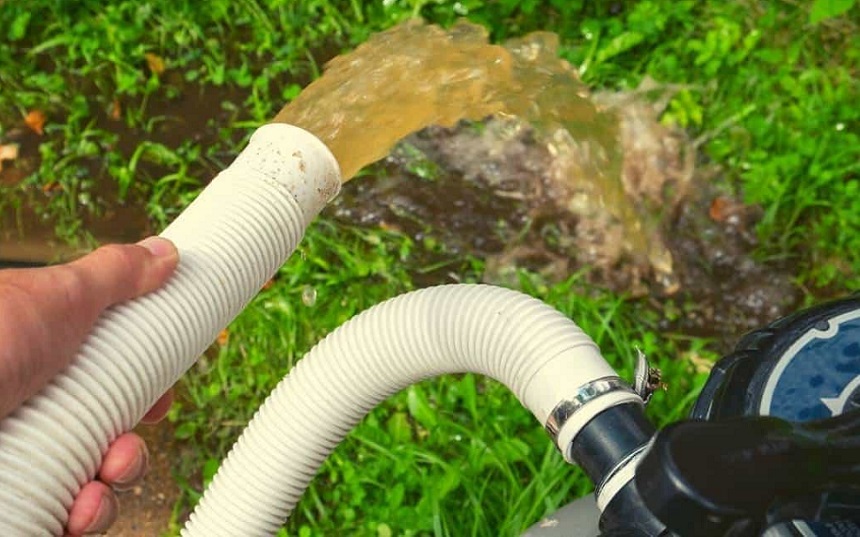
When you backwash your swimming pool filter, you are likely to draw a lot of water from your swimming pool. This water normally contains chemicals and can hugely affect aquatic life and underground water. Therefore, you need to look for a way to dispose of the water safely.
Often, the method you use to dispose of the water depends on your place since local authorities have different rules and regulations. Therefore, considering these rules is essential to avoid getting yourself in trouble. Below are some of the ways you can use to dispose of filter backwash water.
Storm drains are popular when it comes to disposing of backwash water. Although most city local authorities allow residents to use this method, you first need to get a permit. Additionally, you need to regulate the number of chemicals in the water before releasing it into the drain. Therefore, ensure you consult with the local authorities.
Another method that you can use to dispose of filter backwash is the plumbing cleanout. In this process, you are required to direct the pool water into one or more plumbing cleanouts in your home.
However, some local authorities don’t allow residents to use this method since septic systems rely on active enzymes in the water disposal process. Pouring pool water into the septic can reduce its effectiveness since it contains chlorine that can kill the active enzymes. In some cities, local authorities ask residents to treat the water before releasing it into the septic system to reduce the chances of killing the active enzymes. Also, you may need to obtain the necessary permits.
Dry wells Trusted Source Drywells | Portland.gov A drywell is a long-term and low-maintenance way to manage the rain on your property. It may be a good solution for a property where erosion and flooding are a frequent concern. Drywells are underground, so they will not change the visual appearance of your space. www.portland.gov are underground structures that contain several layers of gravel, sand, and other media that can allow water to pass through. This structure helps in draining surface runoff water. It collects the water from impervious surfaces, stores it, and then allows it to seep into the groundwater aquifer slowly. Dry wells are essential in areas that experience high amounts of rainfall since they can prevent flooding, saving people’s lives. Additionally, they can protect your property from water damage saving you a lot of money in the long run.
Besides preventing flooding, dry wells can be useful when it comes to disposing of filter backwash water. People prefer this method since it is cost-effective. Moreover, dry wells are safe. However, you need professional help during construction to ensure the structure functions properly.
Pool filters are essential when it comes to removing dirt particles from swimming pool water. However, these particles can accumulate in the system and prevent it from functioning properly. Backwashing helps to remove the dislodged dirt in your filter system, improving the filtration process. As a result, your pool water stays clean always. This process also prevents bacteria from growing in the water, making it safe for swimming.
Your pool water may still appear cloudy after backwashing because there are several other factors that can make your pool water cloudy. One of the common factors is large mediums in the filter. Such a filter allows dirt particles to pass through and contaminate your water. Imbalanced water chemicals can also make your water appear cloudy.
Although backwashing can help in cleaning your pool filter, this process utilizes a lot of water. On average, you may use about 200-300 gallons of water. Therefore, you may need to add extra water to your swimming pool once you finish the backwashing process. After adding fresh water into your pool, test its chemical composition and balance it accordingly.
